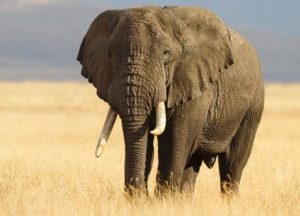What Is Elephant leather?

Elephant
Elephants have fallen in numbers greatly since the turn of the 20th century, prior to the turn of the 20th century there were several million elephants in the world, today there are only around 600,000 African elephants and around 35,000 wild Asian elephants.
In Africa a great deal of accessories, belts, handbags and other types of goods are made from elephant hide, but the WWF highly recommended that people do not purchase these items to help destroy the elephant hide trade.
Dealing in elephant hides and skins has very strict rules and regulations surrounding it, these can be found in Europe, but make sure the correct paperwork is shown and presented when purchasing such hides.
If you are looking for genuine elephant leather, then make sure you do your homework and research as a great deal of leather is sold and passed off as elephant hide, when in fact it’s just cow hide that’s heavily embossed to represent elephant hide.
Any importation of elephant skins have to abide strictly to CITES regulations, so make sure you get sight of the correct paperwork when buying elephant hides, or you could land yourself in some deep water.
Elephants skin can be upwards of 3 cm thick, the skin has to be this thick to hold the animal together due to its pure weight and mass volume.
Elephant hides are generally very wrinkly this is a good sign to tell them apart from fake hides.

Elephant Leather Hide Showing Deep Wrinkles
Due to the thickness of elephant hides they can gain very large cracks if the correct care isn’t taken to preserve it and nourish it. A regular protection cream applied to the hide will prevent the cracking from happening.
You can recolour elephant hides and provide a fantastic protection system with a leather juice.